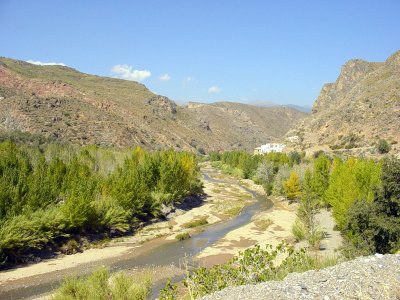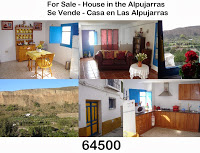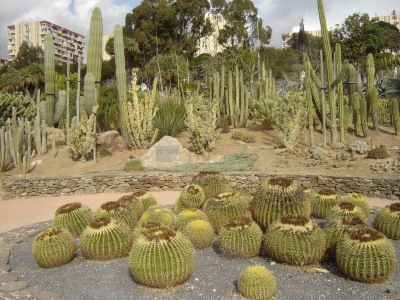by Robert Bovington
.
Málaga,
the second largest city in Andalucía, is surprisingly attractive given
its close proximity to the Costa del Sol. In recent years, it has made
some concessions to tourism but the changes made have only further
enhanced the city’s reputation as a cultural tourist destination. For
example, the Picasso Museum has recently been opened. Pablo Picasso was
born in Málaga and the new museum has an extensive selection of his
works.
.
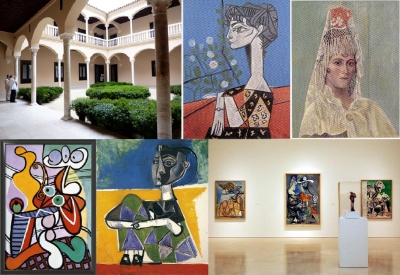 |
| Picasso Museum, Málaga |
.
Only a
short walk away is the Renaissance Cathedral. It was begun in 1528 on
the site of a mosque. However, the building is still incomplete, as one
of the two towers remains unfinished. To be fair most of the building –
the interior, the main facade and one of the towers – were completed in
1782, a mere 254 years later! It was worth the wait for the building is
quite splendid especially the Baroque façade which faces the Plaza del
Obispo. Whilst the exterior is quite exuberant, the interior is rather
solemn – mostly Renaissance but with some Baroque embellishments.
.
 |
| Málaga Cathedral © Robert Bovington |
 |
Málaga – El Sagrario
© Robert Bovington |
.
Next
door to the Cathedral are two more historic buildings – El Sagrario and
the Palacio Episcopal. The former is a 16th century church that actually
stands in the gardens of the Cathedral. The 18th century Bishop’s
Palace stands in the Plaza del Obispo. Its pink and grey doorway is
especially attractive.
.
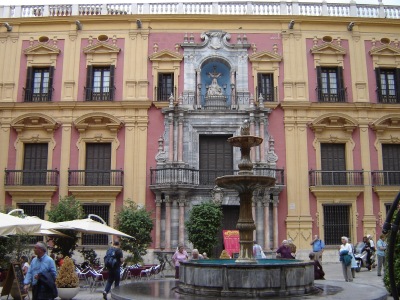 |
| Málaga – Bishop’s Palace © Robert Bovington |
.
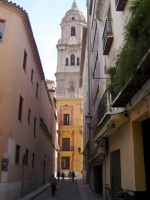 |
an alleyway in Málaga
© Robert Bovington |
This
area of the city has many monuments dating from the Christian era yet
there are many little alleyways and tiny streets with a decidedly
Moorish feel to them. There are numerous bars and cafés here, so it is a
good place to obtain refreshments, which you’ll need if you intend to
visit the Alcazaba and the Castillo de Gibralfaro! These monuments are
but a short walk from the cathedral – along Calle Cister to the Plaza de
la Aduana.
.
Málaga is a big city but most of its main attractions are in close proximity.
.
 The
Plaza de la Aduana is where the Teatro Romano is situated. Following
extensive restoration work, the theatre was opened to the public in
2011.
The
Plaza de la Aduana is where the Teatro Romano is situated. Following
extensive restoration work, the theatre was opened to the public in
2011.
.
Overlooking
the theatre is the Alcazaba which stands near the foot of Gibralfaro
Hill. From Calle Alcazabilla, a series of zigzag walkways gradually wind
their way up to the fortress. The Moors built it between the 11th and
14th centuries when Málaga was part of the Kingdom of Granada. It is a
delightful place to stroll. Bougainvillaea, jasmine and honeysuckle
adorn its courtyards and gardens and there are views of the city and the
port from the ramparts of the fort.
.
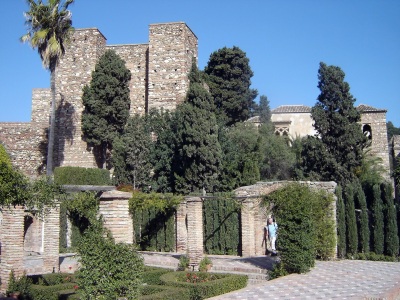 |
| Málaga Alcazaba © Robert Bovington |
|
|
|
 |
Málaga Gibralfaro
© Robert Bovington |
.
For
really spectacular views, however, a visit to the Castillo de Gibralfaro
is necessary! The remains of the 14th century castle overlook the
Alcazaba as well as the city that, from this height, looks rather
attractive with its ribbons of greenery.
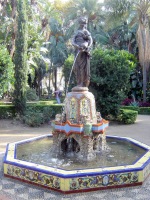 |
Paseo del Parque fuente
© Robert Bovington |
The
Paseo del Parque, in particular, is a pleasant place to visit. A
splendid way to get from the Alcazaba to the harbour is to walk the
length of this verdant botanical garden. It is a quiet oasis amidst the
bustle of the surrounding streets.
.
There
are many other interesting places to see in Málaga – churches, museums
and attractive squares like the Plaza de la Constitucíon.
.
One
particularly fascinating place to visit is El Cementario Inglés. This
English cemetery was the first Protestant burial place in Spain. It was
founded in 1831 and among its famous visitors was Hans Christian
Anderson. He visited in 1862 but didn’t stay – unlike Gerald Brenan, the
English author, who did and is buried there!
.
Most English people who fly to the busy Málaga airport miss the
opportunity of sampling the delights of this fascinating city. Instead,
they head for Torremolinos, Fuengirola and Marbella and good luck to
them! It has meant that depite its close proximity to the Costa del Sol,
the city of Málaga has retained its Spanishness. Amidst the high-rise
blocks of the modern town can be found fascinating old buildings, leafy
parks and tiny bars where the locals gossip over a glass of fino and a
tapa.
.
 |
| Málaga © Robert Bovington |
.
more blogs by Robert Bovington…
|
“Photographs of Spain”
|
|
|
“postcards from Spain”
|
|
|
“you couldn’t make it up!”
|
|
|
“a grumpy old man in Spain”
|
|
|
“bits and bobs”
|
|
|
“Spanish Expressions”
|
|
|
“Spanish Art”
|
|
|
“Books About Spain”
|
|





